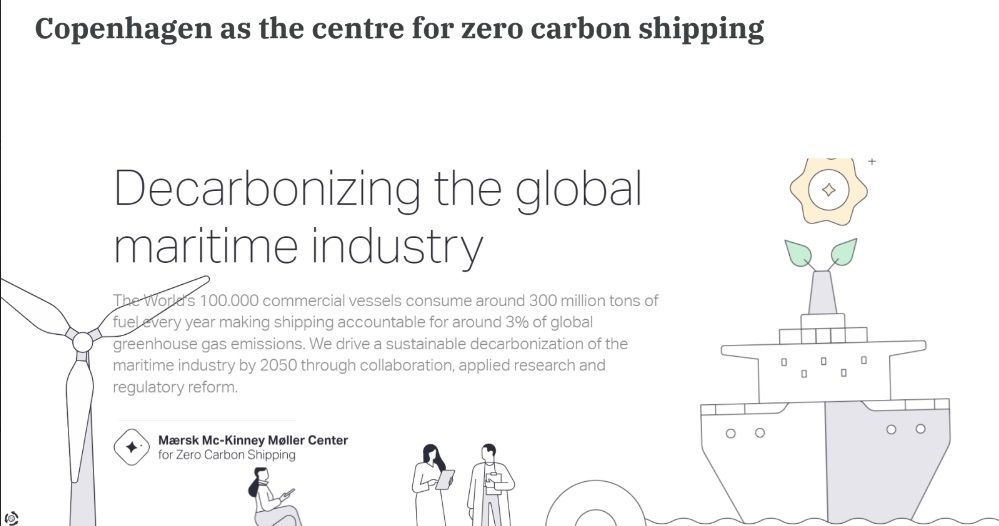We first came to Copenhagen sometime in the mid-90s, so long ago we don’t remember the specific year nor the month, though our memory wafts with vague hints of spring time. Of course, Copenhagen’s spring is vague to begin with, an unpredictable mix of snow, warmth, wind and rain. Back then Copenhagen was still deciding what to do it when it grew up. Today, it is a very happy adult indeed. In fact, perennially ranked in the top two happiest countries in the world. One Copenhager we met with attributed their country’s high happiness to low expectations—when you expect so little you are exceedingly content with the basics of life—the basics often provided to you through government programs paid for by high taxes.
But Copenhagen punches well above its fit weight (bicycling and walking keeps them in fine shape) with a resilient economy, one of the largest market cap companies in the world in Novo Nordisk and a strong logistics shipping sector highlighted by the second-largest shipping company in the world, Maersk. Not to mention a great culinary scene. What’s to be sad about? We can think of a number of country populations who should look around themselves and like the Danes be much happier than they are. And we’re happy to tell you three tales from our trip last week to Copenhagen and Malmo: the turnaround of Malmo, Copenhagen’s climate vision, and China’s presence is everywhere. It’s this week’s International Need to Know, like Scandinavia, always happy to present international information and data.
Without further ado, here’s what you need to know.
The Turnaround of Malmo
Science has shown, and the pandemic was a hard kick reminder, that isolation Is bad. We are meant to socialize and work with others. This is as true of cities and countries as of people. Malmo, Sweden, just across the Oresund from Copenhagen—is another fine example. When we were in Copenhagen in the 90s, we did not take the ferry to see Malmo—the only mode of transportation extant to get there back then. The Swedish city was isolated. In fact, Malmo was much like the rustbelt of the U.S.—deindustrialized, unemployment high, prospects low. One of the city’s solutions was to build the Oresund Bridge, connecting the city to Copenhagen via car and train for the first time. The bridge opened in 2000. Around the same time, the ports of Copenhagen and Malmo merged, the first two-country port merger ever. Today Malmo is doing well: its port steady, high tech businesses removing the rust, new development everywhere. And in a few weeks Malmo will host for the third time the Eurovision Contest. We sing its praises, though not competitively.
Copenhagen Sets a Climate Example
Denmark is in a struggle to set the best example possible for combating climate change. They are too small a country to be other than a pebble of carbon in the global rock slide of CO2 but if they can become carbon neutral by 2050 they hope to show how others can too. Perhaps the most challenging area to do so is the shipping industry. Technology does not yet exist to cleanly power container ships. Companies and organizations in Copenhagen are experimenting with fuels such as methanol and ammonia but it’s still in early days. As one person said to us, “It’s good to set a vision as long as it doesn’t turn into a hallucination.” This and other climate change challenges likely means the world will need to turn to carbon capture as part of the solution to reaching net zero carbon by 2050. Denmark (and next door neighbor Sweden) are playing a role here too. A waste to energy company is trying to add carbon capture into the mix. They can turn some of the waste into energy and clean some of what is burned but to deal with the current emissions of CO2 from burning waste they are working to capture carbon. They hope to have technology operational by the end of the decade. Let’s hope that vision comes true with no hallucinations.
China Corner: China Always Looms
No matter where you go in the world, China’s there…dressed up in its commerce cloak of power. This is certainly true in Copenhagen and Malmo in predictable ways such as trade and investment—BYD’s electric cars flood the ro-ro ships coming into port—but in a surprising one as well. Two logistics companies we met with noted that the rise of Chinese ecommerce companies, Shein and Temu, have driven up the rate of air freight. Yes, so many Danes and Swedes and other Scandinavians, northern Europeans and, well, all the rest of us, are buying so much cheap, disposable clothing and shiny baubles—most of which is shipped via air (we need our baubles ASAP!), it has driven the price of air freight up. In America more people, including legislators, are catching on that these goods are legally avoiding tariffs (the de minimis rule). China is the largest trading partner for a large swathe of countries and its exports are affecting the world in visible and hidden ways. No matter where you go, there they are.





